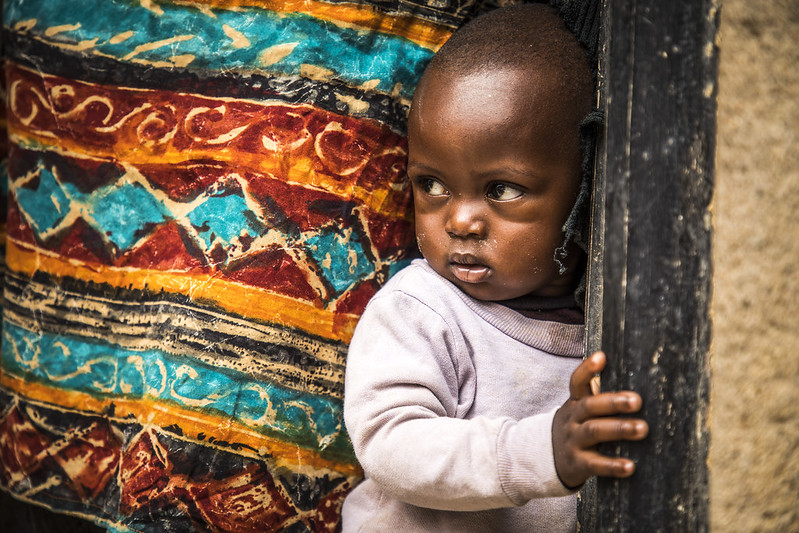 Ethiopia is the largest recipient of USAID in sub-Saharan Africa. After receiving the money for 2023, Ethiopia has seen a suspension in the $1 billion in aid it receives. The funding cut has left the country in a vulnerable position, disrupting critical aspects of its healthcare system, including data management, medicine procurement, delivery, and workforce training and retention
Ethiopia is the largest recipient of USAID in sub-Saharan Africa. After receiving the money for 2023, Ethiopia has seen a suspension in the $1 billion in aid it receives. The funding cut has left the country in a vulnerable position, disrupting critical aspects of its healthcare system, including data management, medicine procurement, delivery, and workforce training and retention
Where the Suspension Has Hit Hardest?
The suspension of USAID funding has severely disrupted Ethiopia’s fight against diseases like malaria, HIV and tuberculosis. Around 5,000 health care workers lost their jobs, affecting vital services such as vaccinations, patient care and disease surveillance. The funding cut also threatens Ethiopia’s global “95-95-95” HIV treatment goals, with 503,000 people receiving care across 1,400 health facilities. Additionally, 10,000 data clerks responsible for managing HIV treatment have lost their jobs, further hindering the delivery and monitoring of care.
This could cripple efforts to combat HIV in the short to medium term, leaving many patients vulnerable. This has worsened the strain on the health care system, leaving it unable to provide basic services and hindering disease eradication efforts, deepening health poverty.
With USAID support, Ethiopia launched a five-year health sector plan (HSTP-II) from 2020-2025 to improve health care. The plan aims to ensure quality, accessible health care, strengthen governance and leverage technology for reliable health data. A key challenge is the severe shortage of health care workers, with less than 100,000 staff members, far below the 445,000 necessary for universal health coverage. The plan’s success is crucial to expanding services and addressing this workforce gap.
The suspension of USAID funding has severely impacted Ethiopia’s HSTP-II, halting training programs and delaying the expansion of the health care workforce. Many NGOs have been hit hard by the suspension, including the Tesfa Social and Development Association (TSDA), which aids HIV patients with food, clothing and school supplies, according to The Guardian. The funding cut has crippled the organization, leaving those who depend on TSDA in even worse health and poverty. Staff layoffs and operational challenges have worsened the already dire situation for those relying on the organization’s support.
Solutions
The government has tried to enhance its support for local NGOs by trying to empower them by simplifying regulatory frameworks, in the hope this will enhance the operational efficiency and sustainability of NGO’s despite the budget constraints they are now facing. Following the advice of the Ethiopian Civil Society Organisation Authority, NGOs that did not rely on USAID funding are forming alliances with other local NGOs, enabling them to share resources, have joint fundraising efforts, and increase advocacy for policy changes to support the nonprofit sector during this challenging period.
NGOs such as the Mekedonia Humanitarian Association focus on supporting the critically disabled, elderly and mentally ill by providing housing, clothes and other vital amenities. Another organization is the Ethiopian Human Rights Council, which focuses on providing legal aid and investigating human rights abuses. These have turned out to be important practices for non-USAID-funded NGOs as it has provided support for these NGOs to allow them to continue their work during the period of the suspension.
Conclusion
The suspension of USAID has left Ethiopia’s health care system in an unprecedented crisis, affecting disease eradication efforts, health care workforce expansion and the operations of vital NGOs. The abrupt withdrawal of $1 billion in aid has crippled essential programs, forced widespread layoffs and disrupted Ethiopia’s ability to meet global health commitments. The impact on HSTP-II and organizations like the Tesfa Social and Development Association underscores how deeply intertwined USAID funding was with Ethiopia’s healthcare infrastructure.
Efforts to diversify funding streams, improve private sector involvement and empower local NGOs mark a shift towards long-term self-sufficiency, though the short-term outlook remains dire. Ultimately, while Ethiopia is making strides to mitigate the crisis, the loss of USAID has left an undeniable mark on its healthcare system. Whether the government’s measures will be enough to compensate for the loss of funding remains uncertain, but one thing is clear: The suspension has deepened Ethiopia’s health crisis, and the road to recovery will be long and arduous.
– Oliver Hedges
Oliver is based in Lancaster, UK and focuses on Global Health for The Borgen Project.
Photo: Flickr


 Lebanon’s medical system faces immense strain as ongoing conflict with Israel has led to widespread damage to health care facilities and personnel. Israeli airstrikes across the country—particularly in southern
Lebanon’s medical system faces immense strain as ongoing conflict with Israel has led to widespread damage to health care facilities and personnel. Israeli airstrikes across the country—particularly in southern  Children with disabilities face
Children with disabilities face  In
In  The internet has revolutionized communication and access to information, but its environmental impact is often overlooked. According to the International Energy Agency, global data centers consumed around
The internet has revolutionized communication and access to information, but its environmental impact is often overlooked. According to the International Energy Agency, global data centers consumed around 
 Jordan, officially named the Hashemite Kingdom of Jordan, hosts
Jordan, officially named the Hashemite Kingdom of Jordan, hosts 
